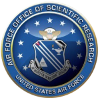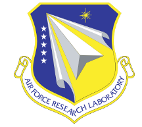Dr. Walker’s primary research interests lie in electric propulsion, plasma physics, and hypersonic aerodynamics/plasma interaction. He has extensive design and testing experience with Hall thrusters and ion engines. Dr. Walker performed seminal work in Hall thruster clustering and vacuum chamber facility effects. His current research activities involve both theoretical and experimental work in advanced spacecraft propulsion systems, diagnostics, plasma physics, helicon plasma sources, magnetoplasmadynamic thrusters, and pulsed inductive thrusters.
***Projects covered by non-disclosure agreements and ITAR are not presented.***
Current Domestic Projects

Joint AdvaNced PropUlsion InStitute (JANUS)
Supported by NASA - Visit Website
As part of the NASA Space Technology Research Institutes, JANUS will enable the flight of high-power electric propulsion by creating physics-based limits, mitigation techniques, and extrapolation procedures to predict the in-space performance, operation, and lifetime of high-power electric propulsion devices from ground tests. To perform the required research, JANUS has mobilized a comprehensive team of world-class researchers who are subject-matter experts in the relevant research areas. The team is composed of faculty members from the Georgia Institute of Technology, University of Michigan, University of California, Los Angeles, University of Illinois Urbana-Champaign, Colorado State University, Pennsylvania State University, Stanford University, University of Colorado Boulder, Western Michigan University, Clark Atlanta University, Chicago State University, and City Colleges of Chicago as well as industry partners from the Aerospace Corporation, Aerojet Rocketdyne, and Busek.
Charge Harmony
Supported by DARPA
The goal of the proposed research is to develop a comprehensive understanding and characterization of a microwave thruster system for very low Earth orbit (VLEO) propulsion using air as the propellant. The effort includes creating detailed performance, plume, and thermal models to predict thruster behavior under VLEO conditions. Advanced plasma diagnostics will be implemented to measure key properties of the weakly ionized plume and detect material impurities, leveraging techniques such as laser-induced fluorescence and optical emission spectroscopy. Finally, the work will support the design and development of a precision thrust stand to enable accurate experimental validation of the thruster’s performance.
Air Breathing RF Thruster for VLEO Missions
Supported by Phase Four Inc.
Compact VLF Plasma Antenna for Underground Communication
Supported by ENIG
High-Fidelity Coupling of Predictive Plasma-Wall Models
In collaboration with researchers from George Washington University, GT HPEPL investigated the interactions between a confined plasma and adjacent wall from both plasma physics and materials science perspectives.
The goal of this work is to create a high-fidelity, predictive capability of plasma-wall interactions. The work is performed in collaboration with researchers from Georgia Washington University. This capability will aid the development of approaches to control the plasma-wall interaction in plasma systems. The proposed research will directly couple plasma models (informed at the EEDF level) with microstructural material models (informed at the level of the mesoscale physics and features). This work advances the state-of-the-art for non-equilibrium modeling of plasma-material systems and offers predictive solutions for higher-performing devices for USAF needs.
Magnetohydrodynamic Energy Generation and Flow Control for Planetary Entry Systems
Supported by NASA
GT HPEPL is working to investigate magnetohydrodynamic energy generation during planetary entry. Atmospheric reentry plasmas are simulated using an artificially radio-frequency ionized supersonic plasma wind tunnel developed in collaboration with NASA JPL. Results include electrical energy harvested from the plasma wind tunnel using a prototype magnetohydrodynamic energy generator design appropriate to planetary entry systems.
Comprehensive Study of Plasma-Wall Interaction
Supported by AFOSR – Visit Website
In collaboration with researchers from Georgia Tech, Georgia Tech Research Institute, University of Alabama, and George Washington University, GT HPEPL investigated the interactions between a confined plasma and adjacent wall from both plasma physics and materials science perspectives.
Development of Negative Ion Thruster
Supported by NASA MSFC
GT HPEPL worked on developing an ion thruster that uses electronegative gas as a propellant. Unlike most ion thrusters, electronegative thrusters produce both positive and negative ions and accelerate both species to generate thrust. This also enables the plasma to remain quasineutral, eliminating the need for neutralizing devices like cathodes at the thruster exit. This work was supported with a grant from NASA Marshall Space Flight Center. It is called the MINT for Marshall’s Ion-ioN Thruster.
Helicon Plasma Source
Supported by MOOG and AFOSR
This research focused on the physics and behavior of RF plasma sources in the HF range. The work also examined the potential of helicon devices as electrode-less thrusters that use plasma double layers to accelerate ions. Thrust measurements and plume evaluation were executed in this work.
Solar Array Exposure to an Arcjet Plume
Magnetohydrodynamic Power Generation for Upper-Stage Rockets
Very-short Antennas via Ionized Plasmas for Efficient Radiation (VAIPER)
Hi-speed Plasma Science (HiPS) to Enable Advanced Radiation Devices
Electric Rocket Propulsion Society
Air Force Research Laboratory
Georgia Tech Center for Space Systems











